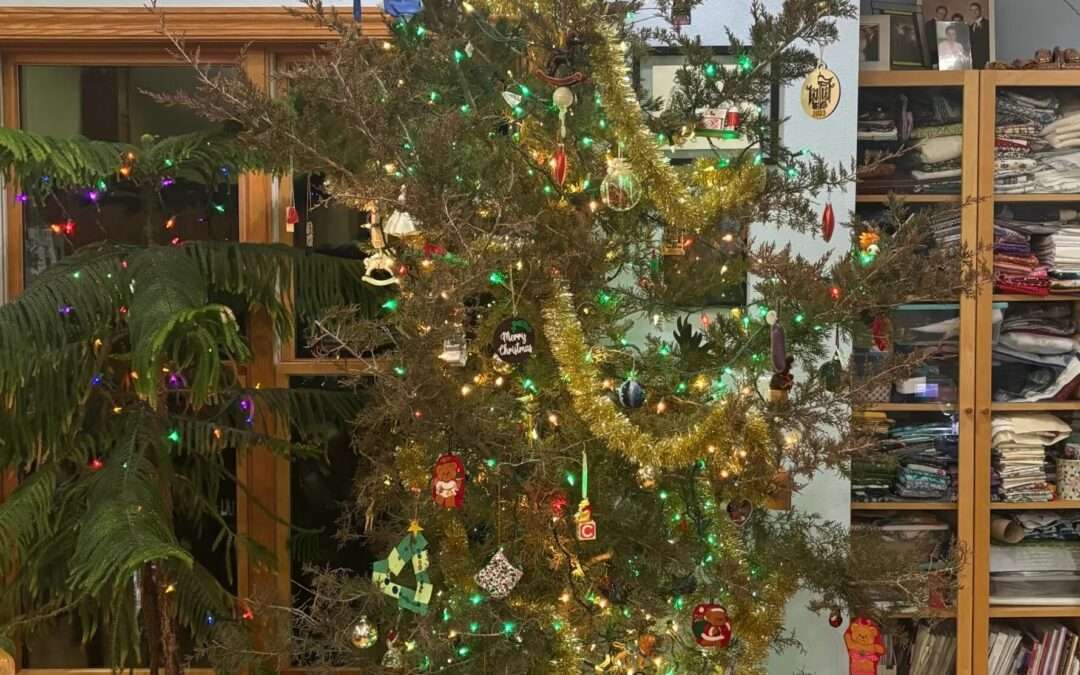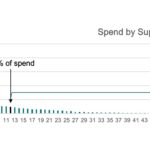Because this week is Christmas and this post will publish on Christmas Eve, let’s talk about sourcing a live Christmas tree as a supply chain professional. Now, true to form, this post is coming too late to do anything about it this year, which is appropriate for the topic. We’re always getting requests to purchase things or quotes from our internal customers too late for the full supply chain cycle. Note also that I’m going to talk about a live tree, not an artificial tree, simply because I’m partial to them. The merits of a live tree vs. an artificial tree we shall save for another post (maybe next year…). With that out of the way, here are the options for purchasing a live Christmas tree and how purchasing one parallels purchasing other components using supply chain methods.
The Big Box Store
Many Christmas trees are sourced from a big box store, such as Home Depot or Lowe’s. This option is easy, convenient, and the store will probably help you package your tree up in a nice neat net to put on top of your poor car, which doesn’t deserve this level of abuse. They are not your least expensive option, but probably not your most expensive option either. Their prices are known and non-negotiable.
The equivalent to this method in the supply chain world is sourcing components from McMaster Carr or Grainger. It’s easy, you know what you’re getting, and it’s done. If you want something unique or custom, you won’t find it here, but it will be “good enough.” It will come in a nice box, it is more expensive than most other options, and it will get there within a week.
The Pop-up Tree Lot
The pop-up tree lot is probably run by your local scout troop, Rotary club, or a similar organization. Usually these are very similar trees to the ones found at the big box store and cost maybe 10-20% more, but the money you spend goes to a good organization. If you’re lucky, they’re also selling cocoa or baked goods.
It’s tricky to find a parallel to this one in the supply chain world because it’s somewhat rare we can purchase items from organizations like these. If your company is large enough to have a foundation or similar component, then purchasing for that foundation is a bit like the pop-up tree lot. I was once fortunate enough to be tapped on the shoulder to purchase for something like this – I was asked to source a full welding/fabrication shop for a public high school that wanted to boost their trade program. That was one of the most fulfilling projects I ever worked on as a buyer because the teacher running the shop program was so very grateful to be getting new equipment for his students. If your company has a foundation or charitable outreach program, consider reaching out to those coordinators and see if your supply chain expertise can help them make the money they spend on programs go even further.
The Tree Farm
The tree farm is probably a bit of a drive away from where you live and has live trees growing and waiting to be cut down. They’re likely run by a local farmer or nursery/greenhouse and have other agritourism activities going on during weekends from mid-November to Christmas. They have options from very large to very small trees, and might have more obscure varieties available. The tree is super fresh, so it’s less likely to drop pine needles all over your living room floor. Some will even rent you a Christmas tree in a pot and “retire” it at some point when it gets too large. Going to the tree farm is a whole experience and the tree is more of an artisan product likely with a higher price. Depending on the size of the tree farm and the level of relationship you have with them, you might be able to request certain niche breeds or pruning types for future years for your family.
The parallel to a tree farm in the supply chain world is the small local business or distributor. They are probably willing to do almost anything for your company and provide a higher level of service and quality than a larger supplier. These are great suppliers to help you consolidate your tail spend if they are distributors, or handle the truly “weird” things you need to buy that are difficult to source. These suppliers also likely help out your diversity supplier programs.
Your Backyard
Living on a farm as I do, this one is my choice. Every year for the last 17 years, we have gone out in the pasture and selected a reasonable-looking cedar tree to cut down and haul in. Now, reasonable-looking varies from person to person, and I’ve often been told our tree is a little bit of a Charlie Brown Christmas tree. This is the least expensive option (nearly free!), but only open to a very few people who either live on a farm or have a close relationship with someone who does. Once my dad had a tree he didn’t like and wanted to cut down in his backyard, so he simply waited until it was nearly Christmas time and it became his Christmas tree that year. I could probably improve our results here by starting to plant and prune a few trees to become Christmas trees, but that’s never been something I put effort into. I will also fess up and say my husband typically does most of the actual work of cutting down and pulling in a tree.
The equivalent to this in the supply chain is the “make vs. buy” decision. If a company chooses to bring manufacturing for a needed product in-house, this is a bit like me cutting a Christmas tree down out of my own backyard. While this doesn’t always save money, it does let the company focus on the aspects of the product they prefer. We always choose a cedar tree because:
1. They are weeds on our farm and
2. We like the scent.
Cedar trees aren’t actually available through other channels because they are prickly, some people are allergic to their pollen, and they often look terrible as Christmas trees. If a company wants something not currently available on the market, there is often a need to simply manufacture it.
Medium-sized Suppliers
Just as there isn’t a good equivalent to the pop-up tree lot in a supply chain, there isn’t a good equivalent to the medium-sized supplier in sourcing live Christmas trees. Perhaps this is a bit of a lesson to all that medium-sized suppliers are a bit caught in-between: they cannot offer the service of a small, local supplier, but cannot offer the volume discounts or convenience of a large supplier. If these suppliers are a critical part of your supply base, keep this in mind and help them focus their offerings on what matters to you. If your company falls in this category, consider your goals and how to lean into them. Will you focus on the customer service aspect and maybe stay smaller as a result? Will you prioritize better pricing or better lead times as your path to growth? Where do you fall on the iron triangle?This concludes my slightly tongue-in-cheek extended supply chain metaphor through the lens of purchasing a Christmas tree. Hopefully those of you reading from outside the US found this either amusing or simply not too confusing. If you would like to talk about your suppliers and getting to the right mix of small, medium and large, let’s chat.




